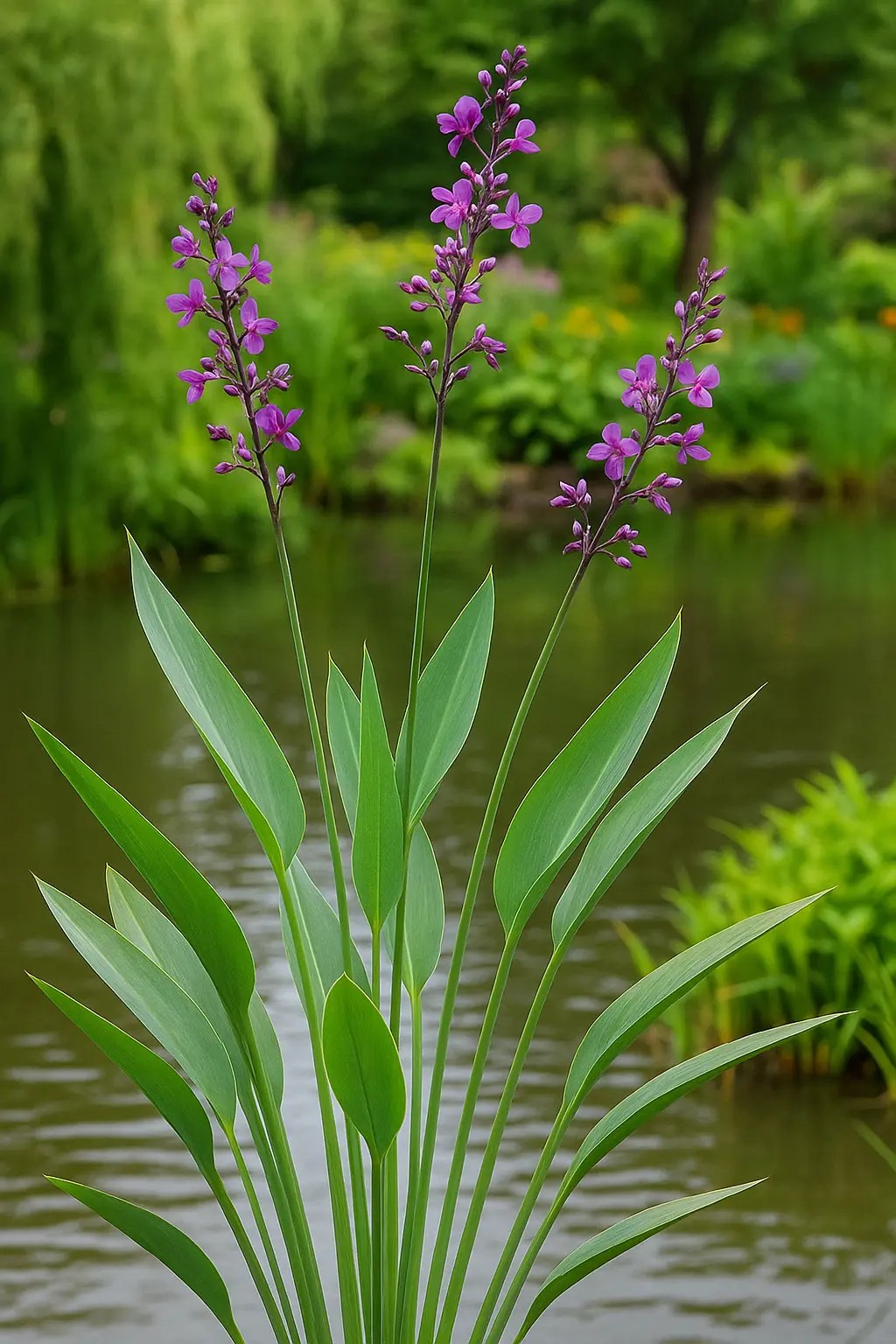Powdery Thalia: A Versatile Aquatic Plant for Ponds and Water Features
Introduction
Powdery thalia (Thalia dealbata) is a beautiful and easy-to-grow aquatic plant that adds a touch of the tropics to backyard ponds and water gardens. Native to the southern United States and Mexico, this tall perennial can reach heights of up to 6 feet and features striking white powdery-coated leaves and purplish blue blossoms.
Growing Powdery Thalia
Site Selection:
- Choose a location with wet soil or a pond with depths of up to 18 inches.
- Thalia prefers full sun but can also tolerate partial shade.
Planting:
- Plant thalia in early spring or fall.
- Dig a hole that is wide enough to accommodate the rhizome and deep enough to bury it by 1 inch.
- Space plants 2 feet apart.
Care:
- Water regularly, especially during hot, dry weather.
- Fertilize lightly with a balanced fertilizer once a month during the growing season.
- Remove spent flowers to encourage new blooms.
Propagation:
- Thalia can be propagated by seed or vegetative propagation.
- To propagate by seed, collect seeds from flowering plants and sow them indoors in a moist medium.
- To propagate vegetatively, divide the rhizomes in early spring or fall.
Overwintering:
- In cold climates, overwinter thalia by submerging the crowns in water that is 18 to 24 inches deep.
- Alternatively, you can move container-grown thalia indoors to a warm, sunny location.
Benefits of Powdery Thalia
Aesthetics:
- Powdery thalia adds a touch of the tropics to water features with its exotic foliage and colorful flowers.
Wildlife Habitat:
- The large leaves and dense growth habit of thalia provide shelter for aquatic insects, frogs, and other wildlife.
Water Filtration:
- Thalia’s appetite for rich, organic nutrients makes it a valuable species for constructed wetlands and greywater systems.
- It helps to remove pollutants from the water and improve water quality.
Long-Tail Keyword-Rich Content
Germinating Powdery Thalia Seeds:
- Powdery thalia seeds do not germinate well in outdoor conditions, so it is best to start seedlings indoors.
- Place the seeds in a moist medium and refrigerate them for three months to undergo cold stratification.
- After three months, the seeds are ready for sowing. Keep the soil moist but not soggy.
Vegetative Propagation of Powdery Thalia:
- Vegetative propagation is an easier method for acquiring new plants.
- Offshoots can be removed from the main plant at any time during the year.
- Cut 6-inch sections of thalia rhizome containing several growing buds or shoots.
- Plant the rhizome cuttings in a small hole that is wide enough to accommodate them and deep enough to bury them by 1 inch.
Growing Powdery Thalia in Containers:
- Growing powdery thalia in containers is a great way to control its spread and prevent it from taking over other plants.
- Choose a container that is at least 12 inches wide and deep.
- Fill the container with a rich, fertile potting mix.
- Plant the thalia rhizome in the center of the container and water it well.
Overwintering Powdery Thalia Plants:
- In areas where temperatures drop below freezing, it is important to overwinter powdery thalia plants to protect them from damage.
- Submerge the crowns of the plants in water that is 18 to 24 inches deep.
- Alternatively, you can move container-grown thalia indoors to a warm, sunny location.
Using Powdery Thalia in Constructed Wetlands:
- Powdery thalia is a recommended species for constructed wetlands because of its ability to remove pollutants from the water.
- It can be planted in shallow areas of the wetland where it will help to filter runoff and improve water quality.
Environmental Benefits of Powdery Thalia:
- Powdery thalia is an environmentally friendly plant that can help to reduce pollution and improve water quality.
- It is a natural water filter that can remove harmful pollutants from the water, including nutrients, pesticides, and heavy metals.
